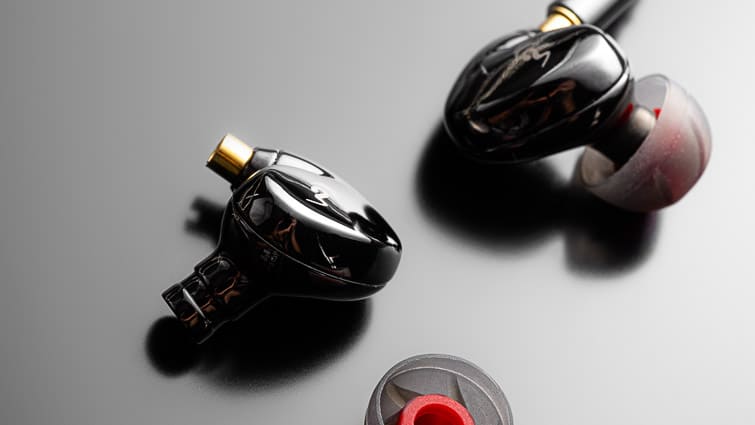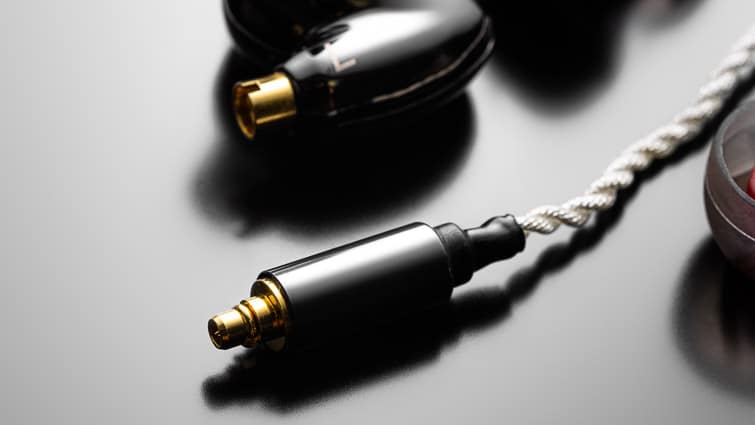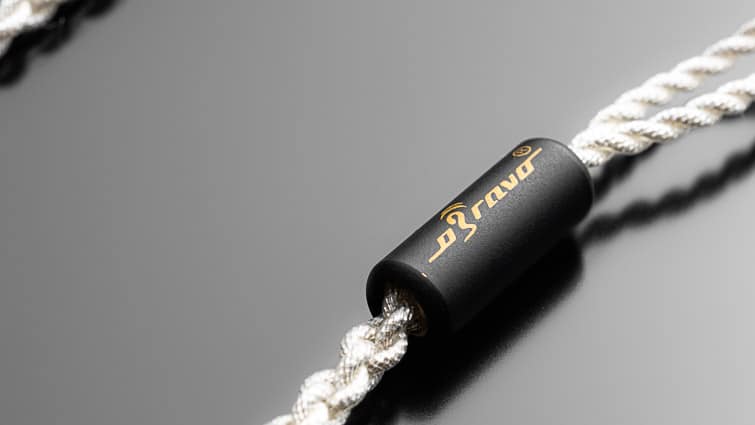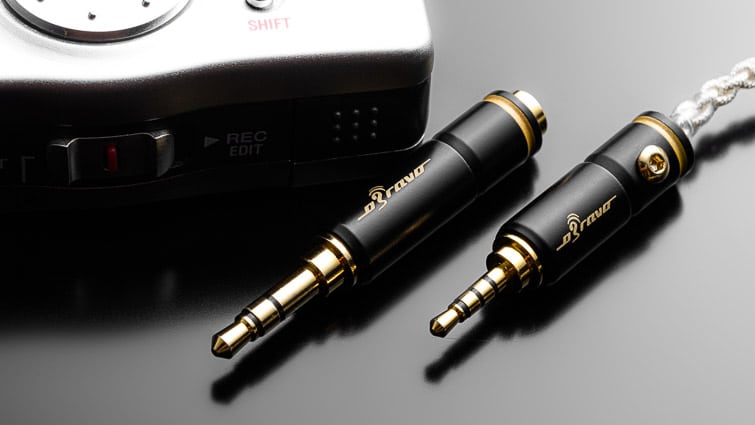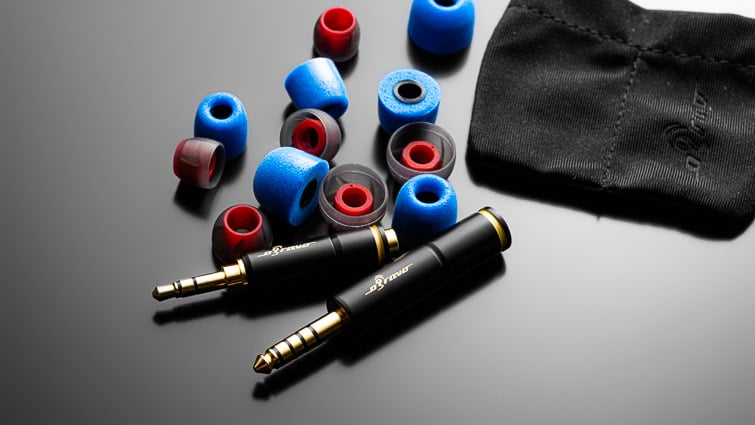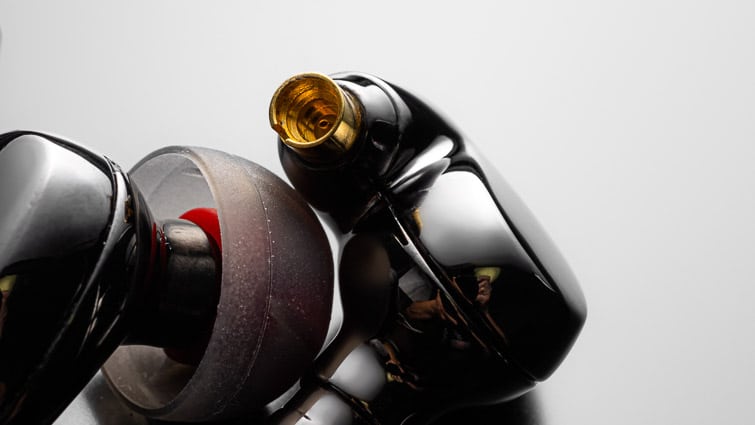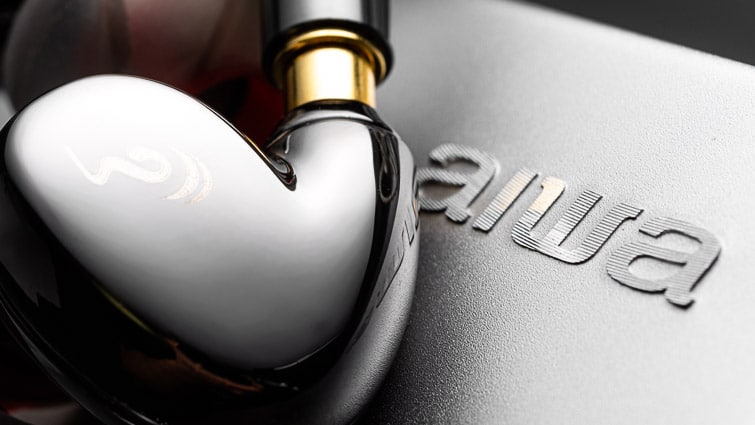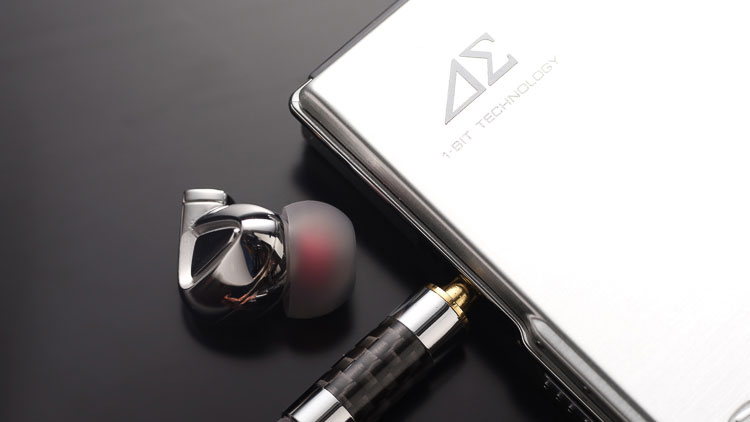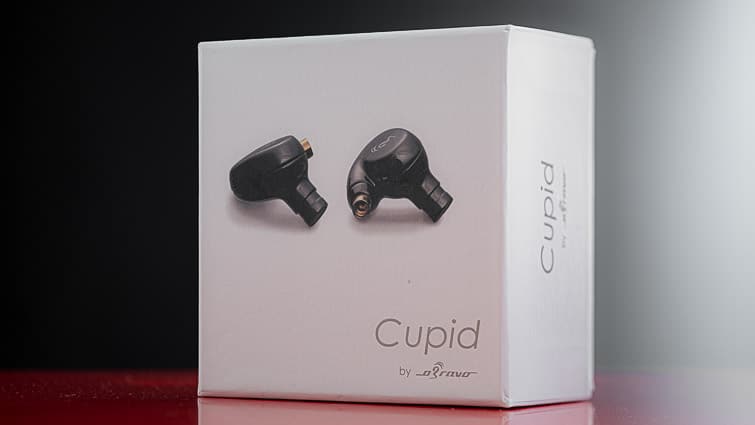The oBravo Cupid is the company’s brand new NDD dynamic and planar driver hybrid universal in-ear monitor priced at £249.00
Disclaimer: The oBravo Cupid sent to us is a sample in exchange for our honest opinion. We thank the team at oBravo and Audio Concierge for giving us this opportunity.
To read more about oBravo products we reviewed on Headfonics click here.
Even from a brand whose product line up is thirty or forty-deep, I didn’t expect an earphone called Cupid. But, Cupid is a god; and since audio companies like to name their stuff after gods and stuff, well played. Also, like Cupid, oBravo’s arrows are at the ready. Or, at least, the cable end of its MMCX plugs are properly sharpened and aimed at your temples.
I hate to bury the lead, but if there is one thing about Cupid I dislike, it is those things. More about that later.
In a vast line up
I’ve not spent as much time as I’d like with oBravo’s vast catalog of earphones. In fact, Cupid is the first one I’ve spent more time with than takes to finish an essay about earphones. I write a single two-thousand-word essay in about five hours. It takes another two hours to edit it. Five plus two times forty. Plus weeks of testing. Doing the whole full oBravo Monty would take… well, you do the maths.
During this testing phase, I’ve come to enjoy Cupid’s high-frequency extension, milds mids, and solid, steady bass. It’s a bright take on a planar, which is nice, and different, but not exactly ‘planar’ in the sense I’ve come to expect. But as you and I know, Cupid is more than just a planar. Among hybrids, it is nearly unique. I certainly hadn’t encountered a dynamic + planar hybrid before.
Build quality
You know, Cupid looks like a million bucks. Its smokey, shiny exterior says luxury like a limited edition graphite Fujifilm X-Pro 2. Yikes. And, its seams are quality, with few deviations in width. However, they aren’t Lexus-precise. Here, they widen near the MMCX port; there they show a bit of glue. The finely printed oBravo logo sits right atop the outer coating. Handled roughly, it may scratch off, but it sure looks good.
The solid earpieces are really nice and spread wide thanks to spiral struts. If you don’t like them, you can choose from a number of other sizes in silicon or Comply, or just about any earpiece you have from similarly stemmed earphones in your collection. It’s a nice, quality array.
Better, the cables are horse-garrotting strong with quality branding. It is also nearly free of microphonic noise. Unfortunately, the connectors are hard to come by, and, the factory earphone MMCX plugs rub right into the temples and tip the earphone forward or back when tugged.
Now for the flip side. Maybe it’s no longer necessary; maybe cables are so high-quality today that they never break. Whatever the case, the Cupid lacks stress relief on the splitter and the heat shrink that doubles as stress relief on the plug and MMCX ports are pretty short. The body, while shiny and beautiful, shows off fingerprints like a CSI lab, and the cable lacks a cinch. Considering the fit issues outlined below, this is a pretty hard knock.
Comfort & Handling
Because Cupid’s fit kit is so well-formed, its pieces are comfortable even for sensitive ears. And, just about any ear out there will be able to forge a good seal. The body is nicely sculpted and slides right in the ear. About the only thing it lacks is a good upward-thrusting insertion angle. The best I’ve encountered are those from Ultrasone in the IQ, and Shanling in the ME100 and ME500. Still, while not of world-class comfort, Cupid feels great.
The cable, however, is a doozy. It is metal connection arm is too long, precluding tight fit around the ears. Instead, it juts forward, rubbing glasses and temples like a cybernetic implant. It’s not a new problem for oBravo earphones. All of them use the same cables. But Cupid is one of the only around-the-ear cable fit earphones in their arsenal and as a result, it really should fit different.
Adapters
Cupid has plenty of body to grab onto, and despite its gloss, it stays in the hand and the ear. I have very few complaints – as far as the body goes – when inserting or removing from the ear. From the player? That’s another thing.
The default cable is 2.5mm TRRS, which is great for AK and compatible balanced outputs. But, if you want to use a Sony 4.4mm TRRRS, or Sharp 3.5mm TRRS or other, you need to use one of a bevy of adapters.
Two are included with Cupid, but while well machined and branded, neither are that well thought out. They fit the plug all nice and good, but they are straight shunts that stick out of the player like a metal cigarette, and catch on clothes, tables and make the player and cable combo more unwieldy. I hate using them because I’m sure I’ll snap off one or the other plug or break the jack by accidentally knocking something. Like the MMCX plug arms, Cupid’s adapters really should be re-designed.
Accessories
Cupid comes with the following adapters:
1 – 4,4mm Sony TRRRS balanced x1
2 – 3,5mm stereo TRS single-ended x1
It also comes with the following tips: silicon tips in S, M, and L sizes; and three sizes of comply tips. The former comes in a form-fitting pressure foam canister. Cut-to-form, the fissures in this canister are too deep. I had to rip it a bit to get the earphones out. The earpieces weren’t so hard to dislodge.
Sound Impressions
Summary
Cupid’s hybrid circuit presents both planar-typical and planar-atypical character to the ear. Inside, the small-diameter dynamic driver does the bass with verve. And next to or in front of or behind it, the 8mm planar driver does the mids and highs. For a planar earphone, the highs are cool and extended; at times they even sparkle. It’s a refreshing sound: open, bright, and where possible, rich and warm. But it’s not typically planar rich or warm or mellow. And, it hisses.
When I first heard it I considered it a neutrally-tuned dynamic with an uncharacteristically rich midrange. Bass sound pressure is high, but not massive, and transitions to mids are generally smooth. Highs tip up a bit more than I’m used to hearing in a planar.
Staging
Like most well-tuned planar phones I’ve heard, the headstage is created from a vantage deep within the music rather than a vantage created from outside looking in. At first, Cupid’s higher-than-average low sound pressure constrains the sense of space in the mids. Later on, it helps to define how far the mids are able to run forward or back along the Z-axis.
Generally, Cupid runs a good step forward along the Z-axis. Tin HiFi’s P1 runs further in that than, but also fades out faster along the X-axis. Cupid’s semi-sparkly midrange hits out pretty far along the X-axis. Unlike along the Z, bass constrains its reach to the sides. Still, it manages to sparkle pretty far out to the sides. The Y-axis steps up a step, making the ellipse in which sound swirls fairly wide, pretty deep, and pretty roomy on the vertical wobble. This circle is wider and taller than normal but Cupid’s powerful bass limits how far forward the Z-axis extends.
Bass
Cupid is one of a few earphones that nearly rattles open the intro seconds to Marcus Schulz’s Mainstage. The miss is minor, but ample evidence that Cupid hits lows with power that few earphones possess. If you’re a dyed-in-the-wool bashed, Cupid will be just shy of best-case, but if you’re someone that loves deep, resonant bass, Cupid will thrill.
The small-diameter dynamic driver behind its lows maintains quick attack and recovery edges. The low-end attack edges ramp up quickly and keep excitement all the way through. Despite such clean energy, Cupid reveals above average texture even when the tunes pick up the thumpy thump thump. Simultaneously, Cupid joins stereo imaging in the lows more than is typical for a typical hybrid earphone. Bass sits in a wide, but conjoined pool below the jaw. It is powerful and omnipresent.
If you’re a fan of planar lows, Cupid may be too much for you. If you’re a fan of large-diameter dynamic bass, you’ll likely want more texture and a bit less force in the attack. You might even want a slower decay. If you dig the bombastic and powerful bass of small-diameter dynamic earphones, bingo.
Mids and highs
Cupid’s midrange is rich, deep, and, when called for, warm. It reaches wide to the side, and unlike the Tin HiFi P1, it isn’t regulated by a heavy vignette. As a result, midrange details kick out straight to the sides and stay strong.
Also, unlike the P1, chimes and other ringing instruments maintain firm forward edges. Minor reverb trails them, which is great for the planar lover. I say this because in general, Cupid exudes the power/control ratio and dynamism of a dynamic rather than planar earphone. Vocals are rich and wear big shoulders and push to the sides with good anchors.
They peak above the bass, but not as clearly as I dig. In this respect, the relationship between mids and bass isn’t dynamic. When music gets fast, say Dance with Me by Alphaville, Cupid can output a confusing wall of sound. But even in the chaos, bass notes are clearly defined above which vocals float with a small, but clear definition. As such, I don’t recommend Cupid for trance or fast synth-pop. (Of course, there are no planar earphones I could recommend for either genre.) For male and female vocals, jazz, and especially classical, BAM! Cupid nails they dynamic range, low-end power, and stage presence- as long as things don’t get too complicated.
Chimes ring with typically planar-beautiful echo. They never peak to sibilance or hard rings. Perhaps, freed as it is from outputting low-frequencies, the planar driver is able to really shine. And shine it does. High mids and highs border on bright, but, it’s the sort of bright with fine fading reverb echo in the background that isn’t found in the dynamic or balanced armature world.
Highs probably peak at a higher sound pressure than do mids, though just barely, and with a rich rather than hard reverb. As a result, Cupid describes a mild U-shaped sound signature, and one rich, and lively in a way that likely you’re not used to hearing.
Matchability
In general, I LOVE Cupid. It’s got all the goods of a planar with a few low-hitting benefits of a dynamic, plus the sparkle of a metal-housed dynamic driver. Alas, it is sensitive. I listen comfortably to it at a volume of 4/16 on my iPhone at home and 6/16 whilst out. Unlike the P1, it hisses like mad when plugged into my favorite Aiwa MD recorders, and reveals ample hiss from home amplifiers.
Its spec sheet says 105dB sensitivity, but it hisses like an earphone rated at 116dB or more. Because of this, it is unique among planar earphones and best works with portable equipment.
Because it isolates well enough to keep such a low volume (6/16 from an iPhone on a train) from a source, that hiss only amplifies from bad sources.
Select comparisons
Tin Hifi P1
The P1 is a planar earphone through and through. Rich, dark, and velvety. Highs or lows, it doesn’t peak anywhere. It is less exciting than Cupid, outputs less bass pressure and is less sparkly up top. For that reason, Cupid is more exciting and fun. But when I reach for a pair of planar earphones, I reach first for the P1. Why? Because the P1 sounds like a planar. Still, in hybrid land, I think Cupid nailed the game.
MS1 and MS4
Both earphones linked together would sound a bit like Cupid. Cupid has the flat, wide midrange of the MS1, but is warmer throughout and, while not as high pressure, has a weighty bass. It’s not as textured as the MS4’s is and its highs are richer than the MS1’s, but if you can wrap your head around an MS1/MS4 hybrid… you’d have a general idea about Cupid.
Our Verdict
So, I love Cupid. I also wish it cleared more checkpoints before hitting the market. It sounds great. That is if your source doesn’t hiss at all and isn’t too loud from volume step one. It is too sensitive for a planar. And its MMCX plug arms stick out too much to wear properly comfortable or secure.
But gosh, it nails the hybrid sound for a person who can’t get into the planar world because of a growing ennui. Tin HiFi’s P1 is too much planar for a dynamic or balanced armature fan. Cupid nails the sparkle and the power in both extremes of the frequency spectrum. But if you’re a dyed-in-the-wool fan of planars, it is too little planar.
I call it a training-wheel planar for the dynamic and balanced armature head. Get my drift?
If it fit better and didn’t hiss, likely it would be my favorite planar earphone on the market. It is too unique to not seriously be considered by loads and loads of portable audio enthusiasts generally and hybrid fans specifically.
Cupid Specifications
- Weight – 0,2g
- Technology – Dynamic, Planar Tweeter
- Enclosure material – metal
- Colour – black
- Audio range – 20Hz – 40kHz
- Sensitivity – 105dB
- Impedance – 16Ω


